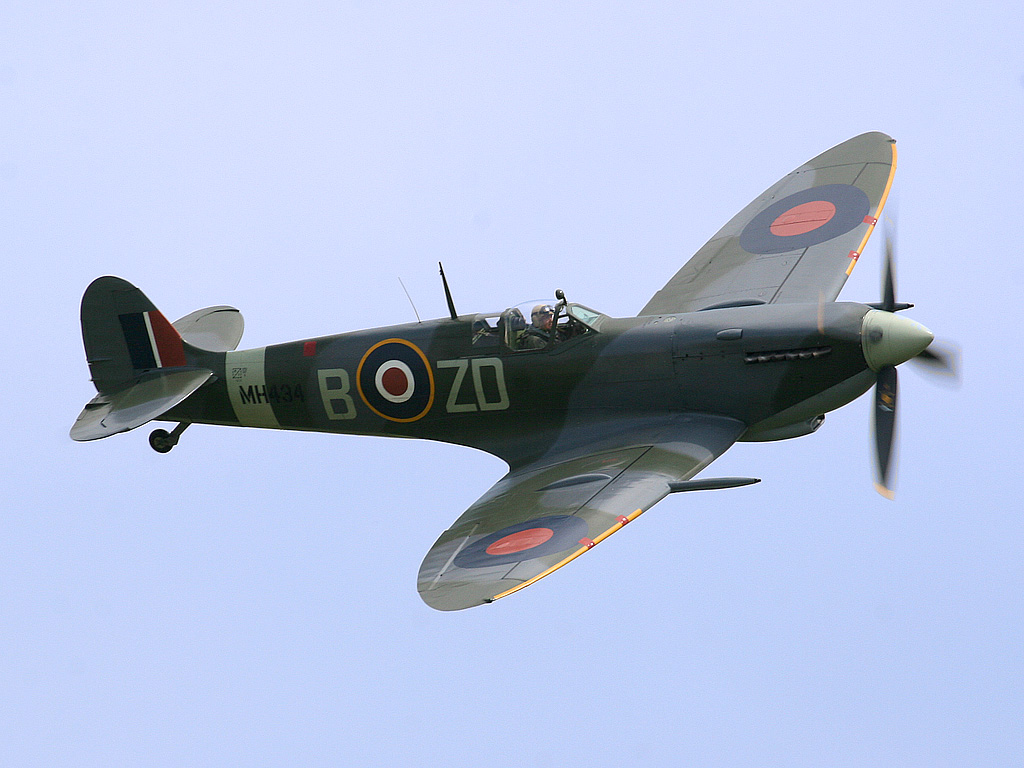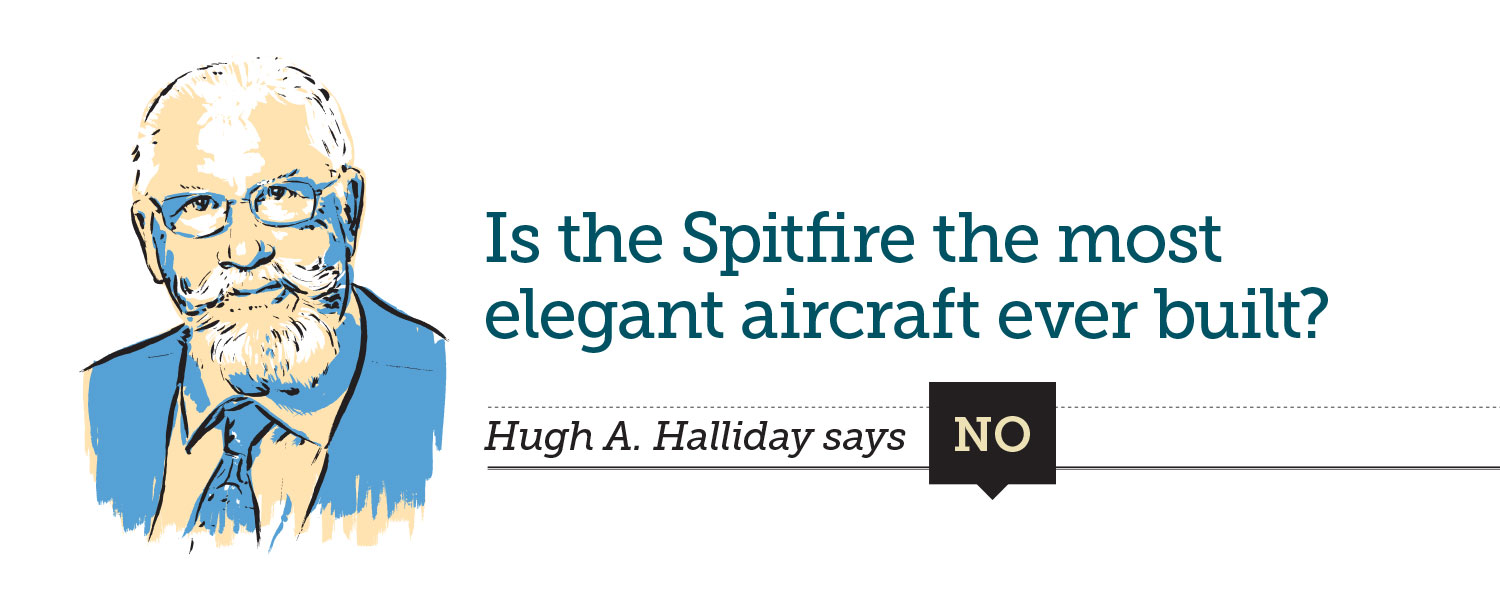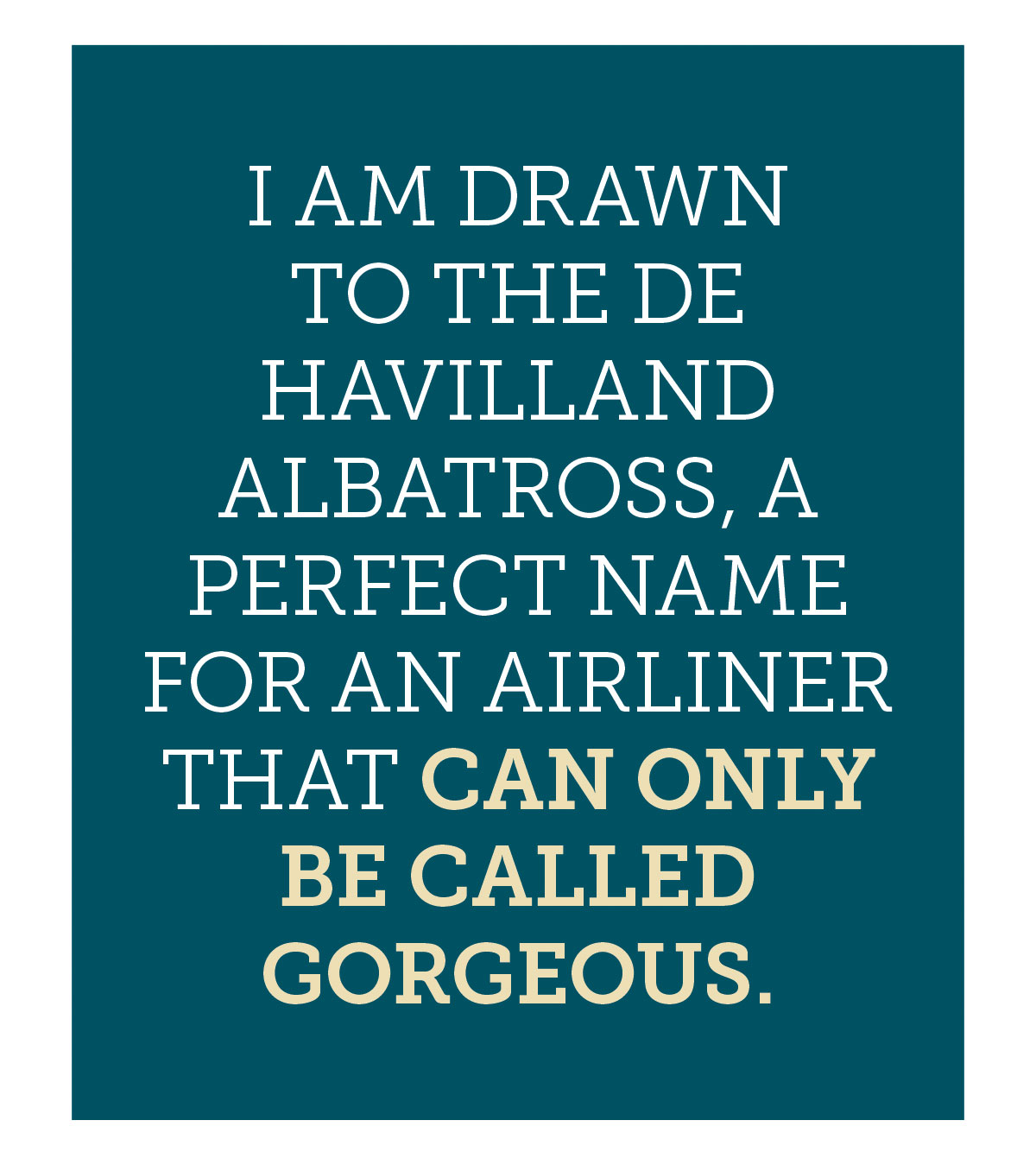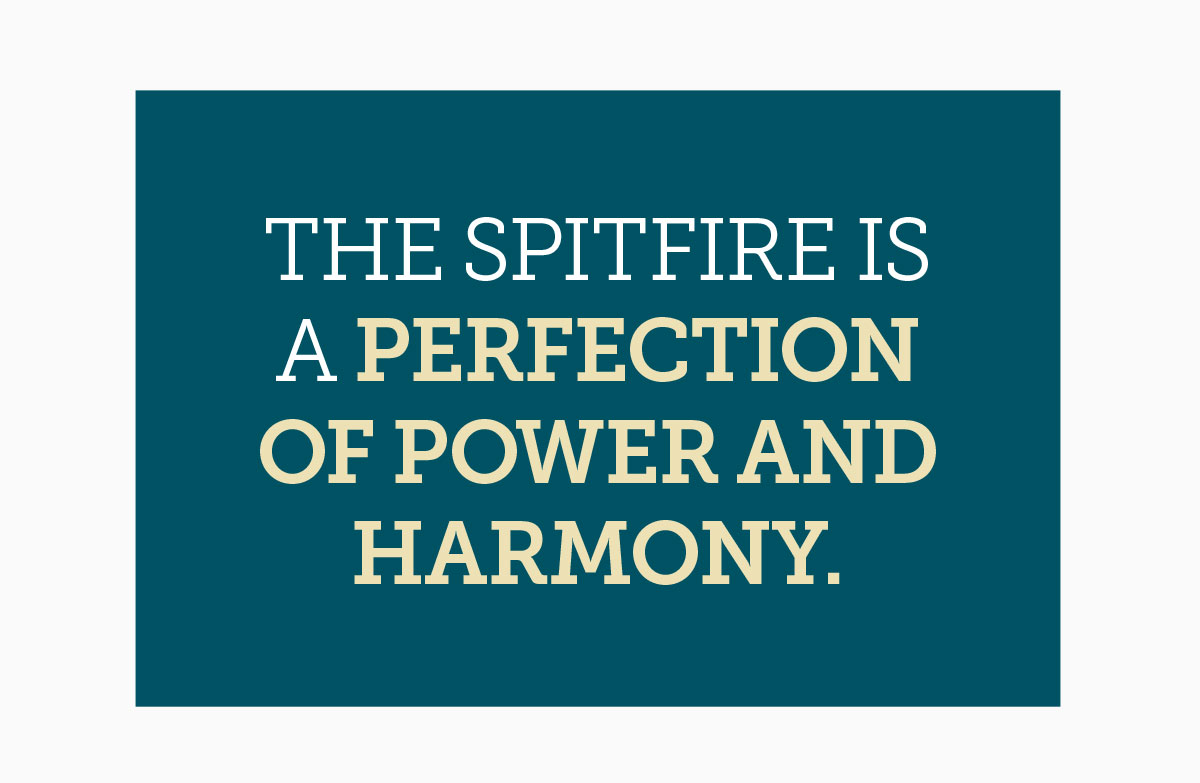
A Spitfire being flown by Ray Hanna in 2005. This aircraft shot down a Focke-Wulf Fw 190 in 1943 while serving with No. 222 Squadron RAF. [Wikimedia]

Elegance, like beauty, is in the eye of the beholder and highly subjective. One could ask the same question about scotch, wine or cars. And superlatives are dangerously inflexible words: terms like ‘most,’ ‘always’ and ‘forever’ should be avoided (especially in matters of the heart). Moreover, pilots (like sailors) are notoriously romantic; why else are ships and aircraft referred to as ‘she’?
The Spitfire was undoubtedly an attractive aircraft, especially before its wings were mutilated by 20-millimetre cannon and its wingtips shortened and squared off in the low-altitude versions. Yet was it the “most” of anything? It was certainly not the most comfortable. Many pilots, having flown in the cramped quarters of a Spitfire, expressed delight at the roominess of American fighter aircraft. “You could do handstands in a Thunderbolt cockpit,” said one.
But to return to the matter of esthetics. Some of the most mesmerizing photographs are of streamlined sailplanes soaring through the clouds. Are they not elegant? A quick study of the Rutan 76 Voyager shows it to be an incredibly attractive airplane, drawing heavily on sailplane technology to enable it to make the first non-stop flight around the world in 1986.

Aircraft of the Second World War—and not only the Spitfire—hold enormous appeal for aviation enthusiasts, in large measure because they are of the pre-computer era and have been associated with titanic, heroic events. Even a downright ugly machine such as the Vought F4U Corsair carries an aura of romantic swagger (helped by its piratical name). By contrast, the Hawker Sea Fury—a beautiful aircraft, radial engine notwithstanding—simply arrived too late to see much action (and that in half-forgotten conflicts) and its reputation, deserved or not, as the fastest piston-engine fighter evokes as much interest as a discussion of what were the most comfortable horse-drawn buggies.
When thinking of aeronautical esthetics, I am drawn to the de Havilland Albatross, a perfect name for an airliner that can only be called gorgeous. Its career was cut short by the outbreak of the Second World War. Only seven were built before the company switched to making combat aircraft. What might have become of the Albatross if development had been allowed to proceed (as happened with the Douglas DC-3)? And speaking of airliners, weren’t the Lockheed Constellation and the de Havilland Comet elegant designs, compared with the brutish utilitarianism of the Boeing 747?
Write that something or somebody was the “first” of anything and an expert (perhaps self-appointed) will pop out of the woodwork to contradict you. Worse still, write that a person or thing is “one of the only” of a category, a phrase that grates on the ear—is it “the only one” or is it “one of the few”? It is the same with the statement that “the Spitfire is the most elegant aircraft ever built.” It is an injustice to so many other aircraft and their designers.

Is it proper to call a machine of destruction elegant? The Spitfire was never designed for airshow crowds or photographers. The slim rapier-like shape and the hard-edged growl of the Merlin engine were developed for one purpose: to defend one’s homeland by climbing like a rocket, attacking a target using overwhelming force, and quickly returning to do it again and again until the invader was permanently repelled.
Yet there is more to it than that.
Last summer, I flew 9,700 kilometres in Canada’s only operating Spitfire, from Gatineau, Que., to Comox, B.C., and back. Appearing at five airshows, the aircraft was seen by about a million people.
The feedback I received was overwhelming. Something about the Spitfire made people want to reach out and touch it—and when they could, they were touched in return. In fact, during static display days, I had to stop worrying. There was no way to stop people from coming up to the machine, asking, “Is that a Spitfire?” and then running their fingertips across the metal of the wing’s trailing edge or the stabilizer.
The aircraft had only 20 hours on it. The paint and finish were perfect. Millions of the owner’s dollars had been spent. I was hyper-alert for scratches and dings. But I soon came to understand that the touch was always reverent. Enormous respect was always demonstrated. Women, men, kids—when they heard “Spitfire” and realized they could come up close enough to smell the hot oil and exhaust, peer into the cockpit, talk to the still-sweating pilot—invariably wanted to experience and guard the aircraft, not abuse it.
And that is the definition, I think, of elegance: how a form affects people. The reaction is gut-level, subjective, instinctive—a subliminal understanding of greatness.

“I saw the angel in the marble and carved until I set him free,” said Michelangelo. In aircraft design, the hard realities of physics and materials reign supreme in much the same way. Ruthless trimming, logic, paring, pruning, “less-is-more”—these are paramount; but do not explain everything. Sometimes a curve becomes perfect. Sometimes a shape speaks of more than just utility. Beauty can shine through a warlike purpose.
And elegance is as elegance does. A Spitfire is no static piece of art. It harnesses 1,600 horsepower for takeoff, accelerates like an arrow, and manoeuvres like a falcon in hot pursuit. It is thrilling and powerful. Push the nose down, leave the power up, and 400 miles per hour shows on the airspeed indicator in seconds.
Yet it looks after you! That was my most wonderful discovery. Its slow-speed handling was gentle and benign. If, during an airshow display, I pulled too hard on the stick, there was no horrific snap roll; just a mild buzzing through the elevators, saying, “You’re asking too much.” I’d release a bit of pressure and we’d be flying comfortably again. And, after a three-point landing, the plane tracked straight down the runway like it was on rails. No wild ground-looping monster. Instead, perfect manners.
Canada’s highest-scoring surviving fighter pilot, retired wing commander James (Stocky) Edwards, went flying with me in a Curtiss P-40 in 2009. We had a great time together. But afterward, he said to me, “Wait until you fly a Spitfire!”
He was right. The Spitfire is a perfection of power and harmony and grace and history—true elegance. As a pilot, I had to wait my entire flying life to experience it.
___
HUGH A. HALLIDAY is a life member of the Canadian Aviation Historical Society. He has been researching and writing about RCAF history since 1961.
DAVE HADFIELD is a retired airline captain with 27,000 hours. He comes from a flying family whose collective aviation experience spans everything from balloons to space stations.
Advertisement
Related posts:
Face To Face: Should the Canadian government have authorized the forcible evacuation inland of Japanese Canadians during the Second World War?
Face To Face: A century ago, Winston Churchill resigned from the British cabinet to serve on the Western Front. Was this the pivotal moment of his military and political career?
Face to face: Was Lieutenant-Colonel Arthur Hadow wrong to order the Newfoundland Regiment over the top from the reserve trenches in the attack on Beaumont-Hamel?
Should Field Marshal Bernard Montgomery have tried to clear the Scheldt Estuary in September 1944?



















